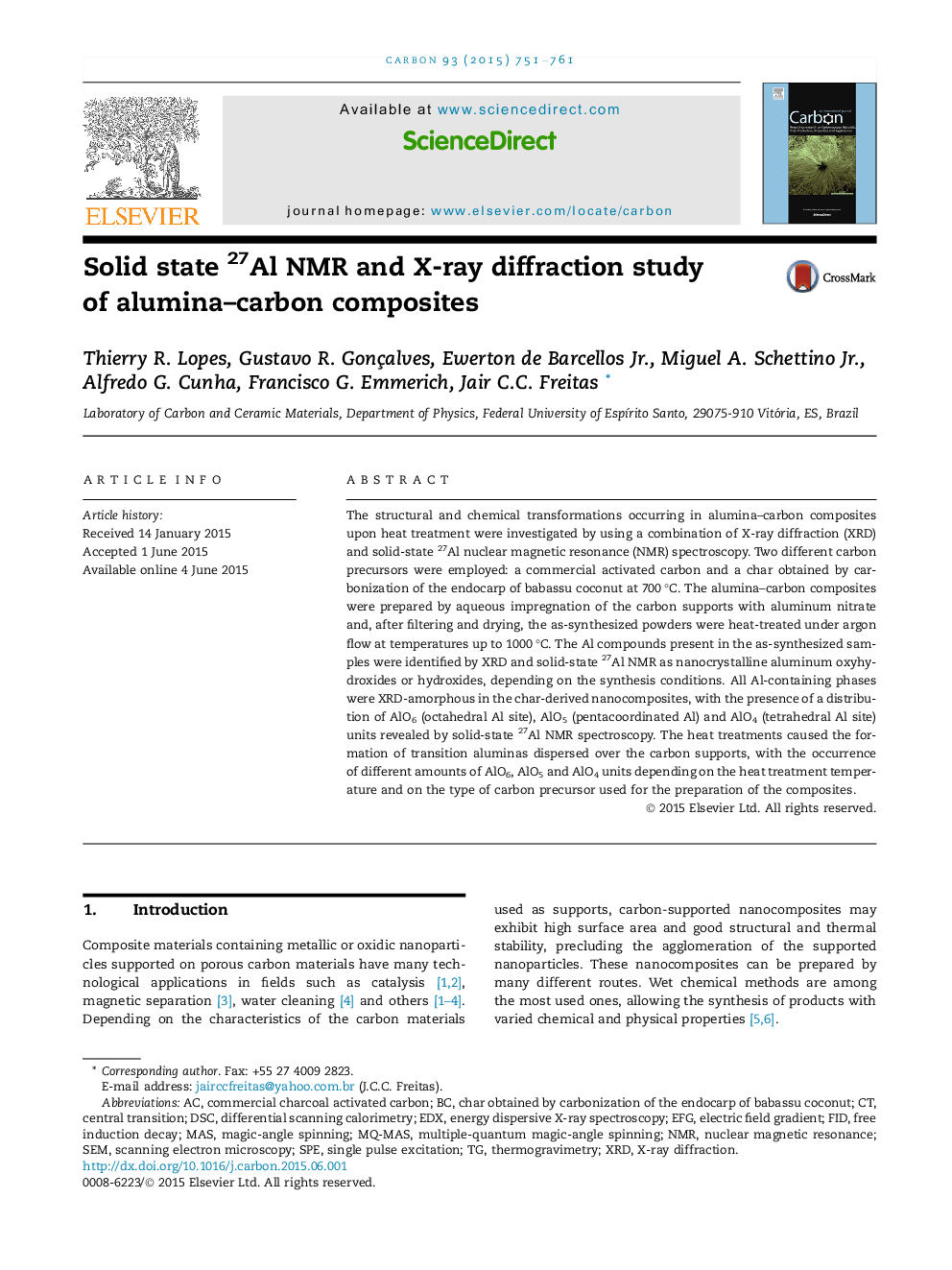| Article ID | Journal | Published Year | Pages | File Type |
|---|---|---|---|---|
| 7851817 | Carbon | 2015 | 11 Pages |
Abstract
The structural and chemical transformations occurring in alumina-carbon composites upon heat treatment were investigated by using a combination of X-ray diffraction (XRD) and solid-state 27Al nuclear magnetic resonance (NMR) spectroscopy. Two different carbon precursors were employed: a commercial activated carbon and a char obtained by carbonization of the endocarp of babassu coconut at 700 °C. The alumina-carbon composites were prepared by aqueous impregnation of the carbon supports with aluminum nitrate and, after filtering and drying, the as-synthesized powders were heat-treated under argon flow at temperatures up to 1000 °C. The Al compounds present in the as-synthesized samples were identified by XRD and solid-state 27Al NMR as nanocrystalline aluminum oxyhydroxides or hydroxides, depending on the synthesis conditions. All Al-containing phases were XRD-amorphous in the char-derived nanocomposites, with the presence of a distribution of AlO6 (octahedral Al site), AlO5 (pentacoordinated Al) and AlO4 (tetrahedral Al site) units revealed by solid-state 27Al NMR spectroscopy. The heat treatments caused the formation of transition aluminas dispersed over the carbon supports, with the occurrence of different amounts of AlO6, AlO5 and AlO4 units depending on the heat treatment temperature and on the type of carbon precursor used for the preparation of the composites.
Keywords
EFGMQ-MASMultiple-quantum magic-angle spinningSPEDSCEDXnuclear magnetic resonanceEnergy Dispersive X-ray Spectroscopycentral transitionMASThermogravimetryNMRFIDfree induction decaySEMScanning electron microscopyX-ray diffractionXRDmagic-angle spinningDifferential scanning calorimetryElectric field gradient
Related Topics
Physical Sciences and Engineering
Energy
Energy (General)
Authors
Thierry R. Lopes, Gustavo R. Gonçalves, Ewerton Jr., Miguel A. Jr., Alfredo G. Cunha, Francisco G. Emmerich, Jair C.C. Freitas,
